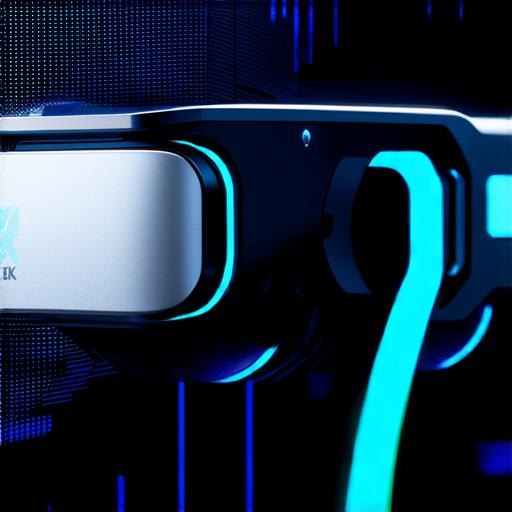Introduction
Augmented reality (AR) is a burgeoning technology that has the potential to revolutionize the way we interact with digital information. AR applications can enhance our experiences in a variety of domains, from entertainment and education to healthcare and manufacturing. With countless possibilities on the horizon, it’s no wonder that AR has captured the imagination of developers and industry experts alike.
However, with so much potential comes a plethora of terminology and concepts. It can be challenging for AR developers to navigate the complex landscape of AR technologies and understand which one is most appropriate for their project. In this article, we will explore the different types of AR mentioned in the module readings and provide guidance on how to determine which one is best suited for your needs.

Types of Augmented Reality
There are several types of AR that are commonly used in industry. Each type has its own unique characteristics and advantages, making them suitable for different applications.
1. Marker-Based AR
Marker-based AR is the most common type of AR and is often used in mobile and desktop applications. It involves overlaying digital information onto a physical object or surface, such as a product package or a tabletop. The user must scan the object using a camera or other sensing technology to initiate the AR experience.
Marker-based AR has several advantages, including its ease of use and wide availability. However, it is limited in terms of the accuracy and reliability of tracking, as the system relies on the presence of a physical marker. This can be a problem in applications where precise tracking is critical, such as in manufacturing or construction.
2. Marker-Less AR
Marker-less AR is an advanced form of AR that does not require the user to scan a physical object. Instead, the system uses computer vision and machine learning algorithms to track the user’s position and orientation in real-time. This allows for more accurate and reliable tracking than marker-based AR, as the system can operate independently of any physical cues.
Marker-less AR is particularly useful in applications where precise tracking is essential, such as in healthcare or manufacturing. However, it requires more advanced technology and is therefore more expensive to implement than marker-based AR.
3. Image-Based AR
Image-based AR involves overlaying digital information onto a real-world image, such as a photograph or video. The user can interact with the digital elements in the same way they would with physical objects, allowing for a more immersive experience.
Image-based AR is particularly useful in applications where the user needs to interact with digital information that is not tied to a specific physical object, such as in gaming or entertainment. However, it requires a high level of accuracy in image recognition and can be challenging to implement in real-world scenarios.
4. Object-Based AR
Object-based AR involves creating 3D models of physical objects and overlaying them onto the real world. This allows for more realistic interactions with digital objects, as the user can physically manipulate the objects in the same way they would in the real world.
Object-based AR is particularly useful in applications where the user needs to interact with complex 3D models, such as in architecture or engineering. However, it requires a high level of expertise in 3D modeling and can be challenging to implement in real-world scenarios.
Determining Which Type of AR is Right for Your Project
When determining which type of AR is right for your project, there are several factors to consider:
- Accuracy and Reliability
The accuracy and reliability of the AR tracking system will depend on the type of AR being used. Marker-based AR relies on physical cues and can be limited in terms of precision, while marker-less AR uses advanced computer vision and machine learning algorithms to provide more accurate and reliable tracking. Object-based AR requires a high level of accuracy in 3D modeling and can be challenging to implement in real-world scenarios. - Cost
The cost of implementing an AR system will depend on the type of AR being used and the complexity of the application. Marker-based AR is the most cost-effective option, while marker-less AR and object-based AR require more advanced technology and are therefore more expensive to implement. - Complexity
The complexity of the AR application will depend on the type of AR being used and the level of interaction required with digital objects. Image-based AR is the simplest option, while object-based AR requires a high level of expertise in 3D modeling and can be challenging to implement. - Realism
The level of realism required for the AR application will depend on the domain and the user’s expectations. Object-based AR provides the most realistic interactions with digital objects, while image-based AR is better suited to applications where the user needs to interact with digital information that is not tied to a specific physical object.Real-World Examples of AR Applications
To illustrate the different types of AR and their applications, let’s take a look at some real-world examples:
- Marker-Based AR
IKEA Place
IKEA Place is an AR app that allows users to visualize how furniture would look in their home before making a purchase. The app uses marker-based AR to overlay digital images of the furniture onto the user’s real-world environment. This provides a realistic and immersive experience that helps users make informed purchasing decisions. - Marker-Less AR
HoloLens
HoloLens is a marker-less AR headset developed by Microsoft. It uses advanced computer vision and machine learning algorithms to track the user’s position and orientation in real-time, allowing for more accurate and reliable tracking than marker-based AR. HoloLens has been used in a variety of applications, including healthcare, manufacturing, and education. - Image-Based AR
Pokémon Go
Pokémon Go is an image-based AR game that has captivated millions of users around the world. The game overlay
